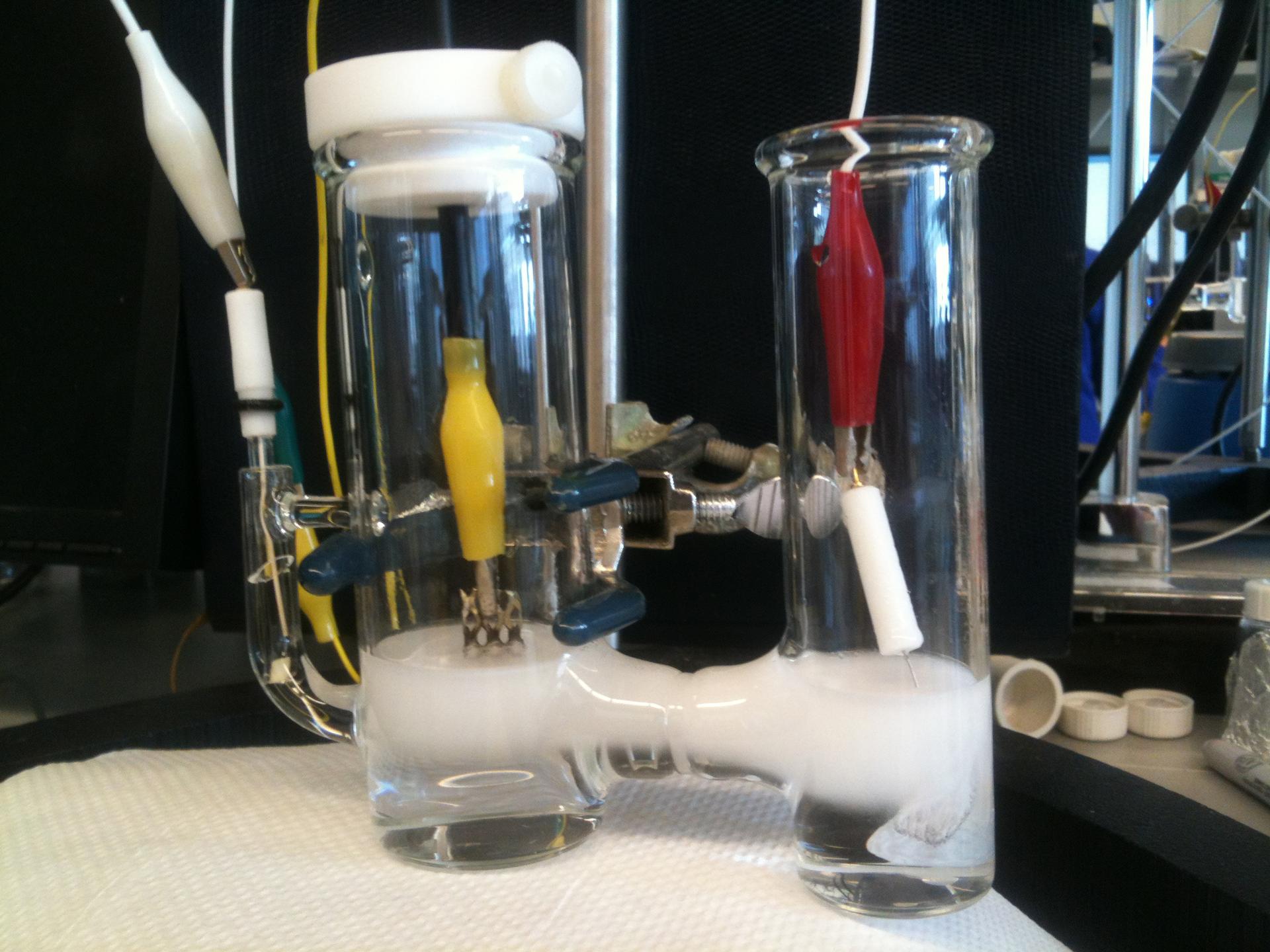Researcher pioneers low-cost means of storing energy
This eectrochemical cell contains an electrode coated with an iron oxide catalyst film and a counter-electrode to produce oxygen and hydrogen fuel. (Photo courtesy of Curtis Berlinguette/University of Calgary.)
Batteries are a convenient but expensive way to store electricity.
There’s another path to storing electricity that physics has known about for centuries, also expensive and even less convenient. It’s called electrolysis and that happens when a current is passed through water, and separates H2O into its two elements of hydrogen and oxygen. The energy in the electricity is released when the hydrogen is burned or oxidized to make water again.
Trouble is, this process needs very expensive catalysts to work.
But now a team of Canadian scientists may have solved the problem of cost, which could revolutionize the storage of renewable energy. Curtis Berlinguette, a professor of chemistry at the University of Calgary, said this could be a game-changer for helping best utilize the electricity generated by solar cells and wind turbines.
“Ideally what you want to do is have a storage mechanism that can store that electricity that can’t be used,” he said, “and then bring it back to the grid when there is high demand.”
Right now, people with solar power or wind turbines put the electricity into the grid as it is generated, whether its needed or not.
Berlinguette and his team have been working to more efficiently transform water into hydrogen, and then store the energy as hydrogen.
“When you need that electricity back, you can convert that hydrogen, mix it with oxygen, and generate electricity that way. Or you can just plug that hydrogen into your furnace and heat your home directly,” he said.
The big innovation is in changing the material used as a catalyst. In the past, catalysts have been crystals, while his research has focused on developing an amorphous catalyst material.
He compares the difference between the materials to the difference between lasagna and spaghetti — where the noodles are the catalyst and the sauce is the water.
“Amorphous materials are much more randomly oriented, much like spaghetti noodles,” Berlinguette said. “And so, when you pour sauce on that spaghetti, it can better interact with all of the spaghetti noodles. And this is the real advantage of coming up with amorphous material. In our case, water can come in and interact with all those different metals.”
But that in and of itself wasn’t a particularly big breakthrough.
“We’ve been able to introduce multiple different metals to these amorphous materials,” he said. “If you think of cooking with a single spice, you get a nice tasty dish. But if you have the right combination of multiple different spices, you can make the dish a truly amazing experience.”
Berlinguette said his new process uses iron oxide, which is rust, augmented with cobalt and nickel. These widely available metals,are much cheaper than what’s being used today, like iridium and ruthenium.
“If we’re able to match performance of ruthenium, which costs thousands times more than iron, then it’s certainly a big discovery,” he said.
There are some indications that Berlinguette’s innovation could be 20 percent more efficient than what’s being used today, along with being a thousand times cheaper. But there’s still work to do to prove that out.
“We’re currently in the testing phase with a large scale electrolyzer with a current player on the market,” Berlinguette said. “These could be out there as early as 2014. The smaller scale units are projected to come out hopefully in 2015.”
We want to hear your feedback so we can keep improving our website, theworld.org. Please fill out this quick survey and let us know your thoughts (your answers will be anonymous). Thanks for your time!
